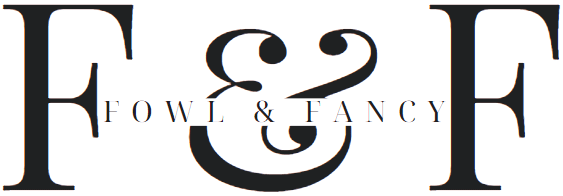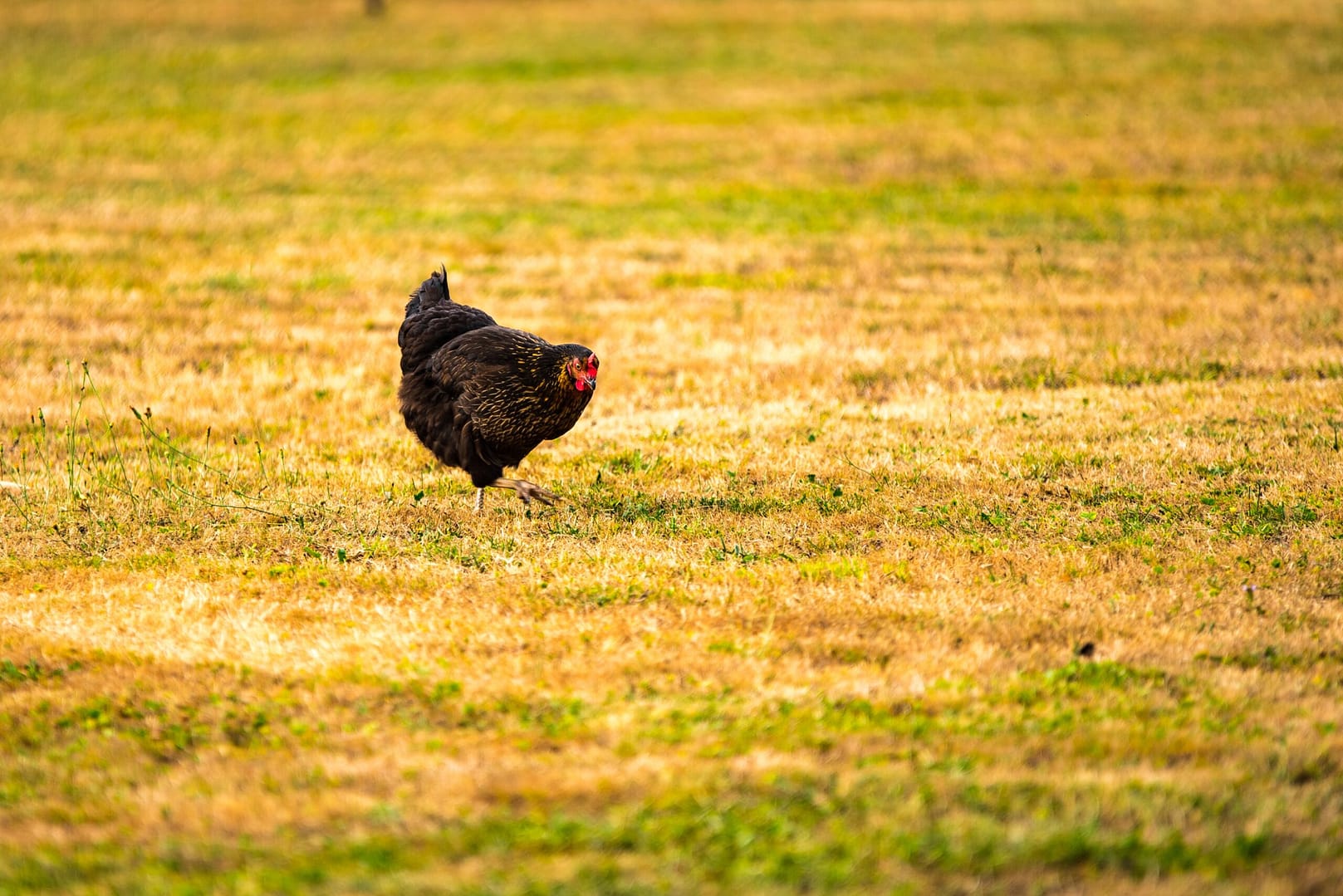A
B
Bantam: A small breed of chicken, often miniature versions of standard breeds, popular for their size and ornamental qualities.
Bantamize: The process of breeding or creating a miniature version of a standard chicken breed to develop a bantam variety.
Beak Trimming: The practice of trimming a chicken’s beak to prevent pecking injuries or aggressive behavior within the flock.
Beard: A characteristic of some chicken breeds, presenting a tuft of feathers under the beak or around the throat area, resembling a beard-like formation.
Biddy: A term often used colloquially to refer to a young chick or sometimes a hen.
Brooder: A heated enclosure used to raise young chicks, providing warmth, shelter, and protection during their early stages of life.
Broody: Refers to a hen’s instinct to sit on and hatch eggs, displaying maternal behavior.
Broody Breaker: Techniques used to discourage a broody hen from sitting on eggs, typically involving temporarily isolating or cooling the hen to interrupt her brooding behavior.
C
Candling: A method of examining eggs using a bright light to determine fertility, embryo development, or egg quality by viewing internal contents through the shell.
Chicken
Chook
Cockerel: A young rooster or male chicken that is less than a year old.
Comb: The fleshy, red crest on top of a chicken’s head, often used for regulating body temperature.
Crest: A tuft or decorative plumage of feathers on the head of some chicken breeds, such as Polish or Silkie chickens.
Crested: Describes chicken breeds with a distinctive crest or tuft of feathers on the top of their heads, such as Polish or Houdan chickens.
Crop: A pouch in a chicken’s throat used to temporarily store and soften food before digestion.
D
Dual-Purpose Breed: Chicken breeds valued for both egg-laying and meat production purposes, such as Rhode Island Reds or Plymouth Rocks.
Dubbing: The removal or trimming of a chicken’s comb and wattles, often done for breed standards or to prevent frostbite in cold climates.
Dust Bath: A behavior where chickens fluff their feathers and roll in dry soil or dust, aiding in cleaning, controlling parasites, and maintaining healthy plumage.
E
Egg Bound: A condition where a hen struggles to lay an egg, often due to a larger-than-normal or misshapen egg causing blockage.
Egg Peritonitis: A bacterial infection occurring when egg material gets trapped in a hen’s abdomen, leading to inflammation and infection.
Egg Tooth: A small, temporary projection on a chick’s beak used to break through the eggshell during hatching.
F
Feather Plucking: A behavior where chickens excessively peck or pull out feathers, often due to stress, boredom, or overcrowding.
Feed Pellets: Formed feed comprising grains, vitamins, and minerals designed to provide balanced nutrition to chickens.
Fledge: The stage when young birds, such as chicks, develop mature feathers and are capable of flight.
Flight Feathers: Long, primary feathers on a chicken’s wings that facilitate flight or gliding in certain breeds.
Flighty: A term describing chickens that are easily startled, nervous, or prone to fleeing, often related to certain breeds’ natural temperament.
Flock: A group of chickens, often living together in a coop or yard, typically led by a dominant rooster or hen.
Free-Range: A farming method where chickens have access to roam and forage outdoors rather than being confined to a coop or enclosure.
Frizzle: A chicken breed or variety characterized by feathers that curl outward instead of lying flat against the body, creating a distinct and curly appearance.
G
Gape Worm: A parasitic roundworm that affects the respiratory system of chickens, causing gasping, gaping, and other respiratory distress.
Gizzard: A muscular organ in a chicken’s digestive system responsible for grinding food with the help of ingested grit or small stones.
Grit: Small, insoluble particles such as sand or gravel that chickens ingest to aid in grinding food in their gizzard for digestion.
H
Hackle: The feathers located on a chicken’s neck or back, often used for fly tying in fishing or for creating decorative crafts.
Hackles Up: An expression indicating a chicken’s feathers, particularly those on the neck or back, are raised, often signaling alertness, aggression, or fear.
Hen: A mature female chicken, typically responsible for laying eggs.
Henpecking: A behavior where chickens peck at each other, often causing feather loss or injury, typically due to stress or hierarchy issues within the flock.
I
J
K
L
Lavender: A unique color variation in chicken plumage, displaying a pale, silvery-gray hue often found in specific breeds like Lavender Orpingtons.
M
Mash: Finely ground or crushed chicken feed, often combined with grains, seeds, and supplements for easier consumption by chickens.
Molt: The natural shedding or renewal of feathers in chickens, usually occurring annually. Sometimes also spelled moult.
N
Nest Box: A designated area within the coop where hens lay their eggs, providing a secluded and comfortable space for egg-laying.
O
P
Pasty Butt: A condition where feces stick to a chick’s vent, potentially blocking the passage and causing health issues if not promptly cleaned.
Perches: Raised bars or poles within the coop where chickens roost or rest.
Pip: The small hole or crack made by a chick while hatching from the eggshell using its egg tooth.
Poultry Litter: Bedding material in the coop, usually made of straw, wood shavings, or other absorbent materials, used to absorb moisture and waste.
Pullet: A young female chicken that is less than a year old and has not yet started laying eggs.
Pulletification: A term humorously used to describe the transition of a chick into a pullet, referring to its growth and development into a young hen before laying eggs.
Pyle: A specific color pattern in chicken feathers, characterized by a mixture of white and red or black, usually seen in breeds like Old English Game birds.
Q
R
Ration: A measured portion of feed or diet provided to chickens, ensuring they receive balanced nutrition.
Roost: A perch or elevated area where chickens rest or sleep, usually found within the coop.
Roosting Bar: A raised bar or perch installed within the coop, allowing chickens to roost and rest comfortably during the night. (also see perches).
Rumpless: A term describing chicken breeds that lack a tail or have a very short tail, resulting in a rounded appearance at the back.
S
Saddle: The area on a chicken’s back just above the tail, often used to describe the region covered by saddle feathers in roosters.
Saddle feathers: Feathers located on the lower back of a rooster, usually longer and more pointed than surrounding feathers, used for ornamental and breeding purposes.
Scratch: A mix of grains and seeds fed to chickens as a treat or supplemental food, encouraging natural foraging behavior.
Shavings: Bedding material made from wood shavings or chips, commonly used in chicken coops for insulation, comfort, and moisture absorption.
Silkie: A breed of chicken known for its fluffy, silk-like feathers, black skin, and gentle demeanor, often raised for exhibition or as pets.
Soft-Shelled Egg: An egg with a thin or incomplete shell, usually caused by a disturbance in the egg-laying process or a deficiency in calcium levels.
Spangling: Refers to the small white or colored spots or dots found on some chicken breeds’ feathers, adding a unique pattern or design.
Spent Hen: A mature hen that has ceased egg production and is typically retired from laying, often used for meat or repurposed as a pet.
Spur: A bony, pointed growth on a rooster’s leg used for defense and establishing dominance within the flock.
T
Trio: Refers to a group of three chickens, often used in breeding terms to describe a pair with an additional male or female for breeding purposes.
U
V
Vent: The external opening used for excretion and egg-laying in chickens, located beneath the tail.
Ventilation: The process of ensuring adequate airflow within the coop or chicken housing to maintain optimal air quality and prevent moisture buildup.
W
Wattles: Fleshy, red, or skin-colored appendages hanging from a chicken’s throat, often found beneath the beak.
Worming: The process of treating chickens for internal parasites or worms that can affect their health.

